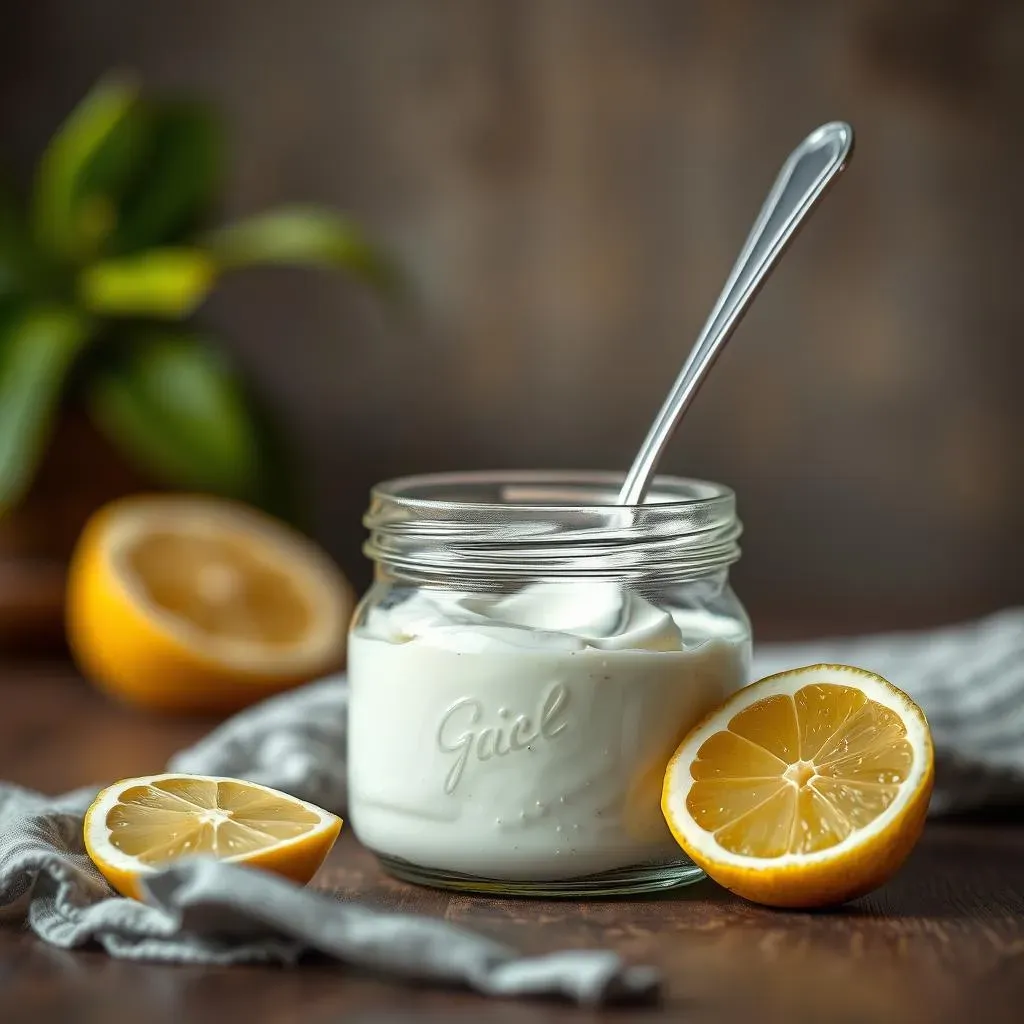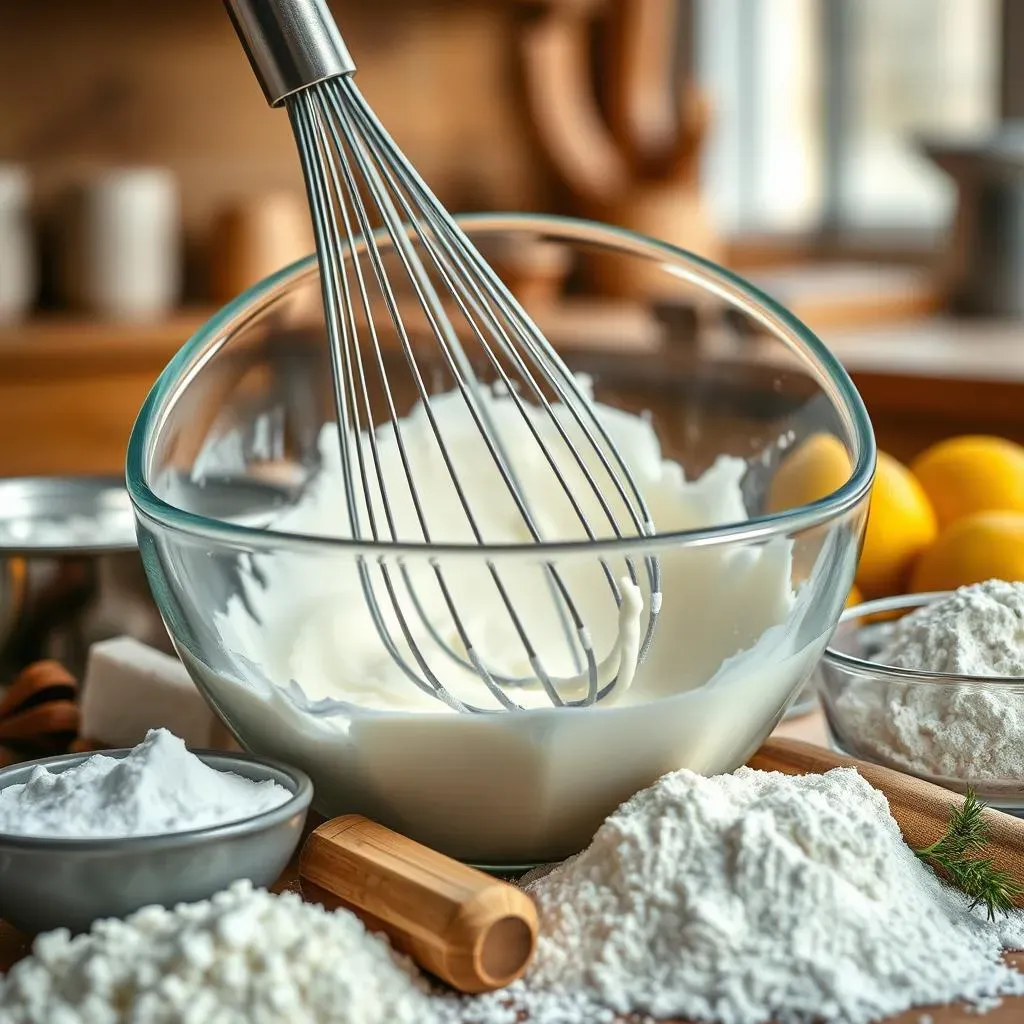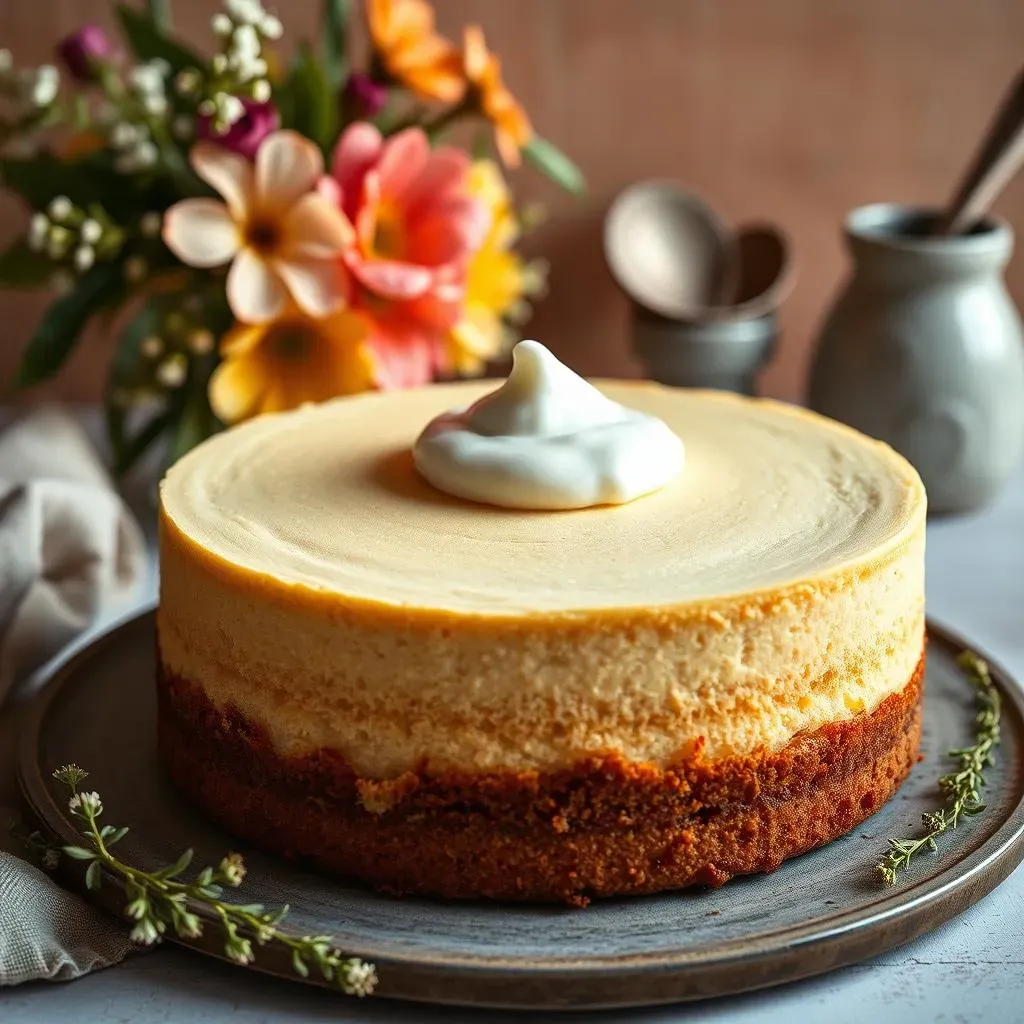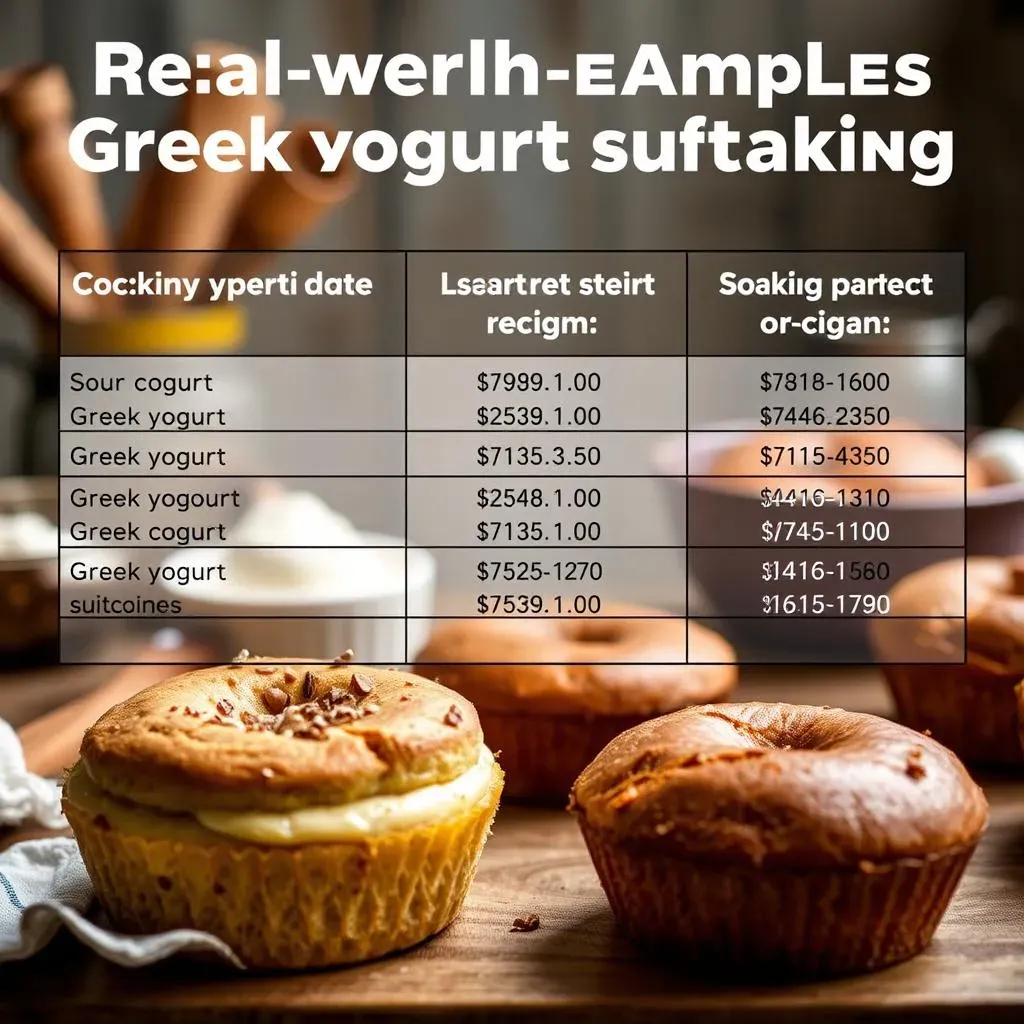Table of Contents
Ever stared into your fridge, recipe in hand, only to find you're out of sour cream? Don't panic! Greek yogurt, that tangy powerhouse, can step in as a surprisingly good substitute, especially when you're looking to bake. But before you go swapping one for the other all willy-nilly, there are some key things to know. This isn't a simple 1:1 swap for every recipe, and we're here to guide you through the ins and outs. We'll explore the rules for using Greek yogurt as a substitute for sour cream in baking, from choosing the right type to understanding how it impacts your final product. Think of this as your cheat sheet for making delicious baked goods, even when sour cream is MIA. We will cover how to make the best substitute, and what to watch out for. So, get ready to learn how to confidently substitute greek yogurt for sour cream in baking and impress everyone with your baking skills.
Greek Yogurt: The Sour Cream Substitute

Greek Yogurt: The Sour Cream Substitute
The Rise of Greek Yogurt in Baking
so you're thinking about Greek yogurt as a stand-in for sour cream, right? It's not as crazy as it sounds. Greek yogurt has become a kitchen MVP, and for good reason. It's thick, it's tangy, and it's packed with protein, making it a healthier alternative to sour cream in many recipes. But let's be real, not all yogurts are created equal. The key here is understanding that the fat content plays a huge role in how it behaves in your baking. We are not talking about the watery stuff, we need the real deal.
Think of it like this: sour cream's richness comes from its high fat content. To get close to that in yogurt form, you need to go for the full-fat version. This is crucial for achieving that moist texture and creamy flavor that you're used to when baking with sour cream. Low-fat or non-fat yogurts just don't have the same oomph and can lead to a drier, less satisfying result. It's like trying to build a house with flimsy sticks instead of sturdy wood, it just won't hold up. So, when in doubt, go full fat.
Yogurt Type | Fat Content | Best Use |
|---|---|---|
Whole-Milk Greek Yogurt | High | Ideal for most baking substitutions |
Low-Fat Greek Yogurt | Medium | Okay for some recipes, but may alter texture |
Non-Fat Greek Yogurt | Low | Not recommended for baking substitutions |
Understanding the Texture and Tang
Another thing to keep in mind is the texture. Greek yogurt is denser and thicker than regular yogurt, which makes it a better match for sour cream. It's got that creamy vibe and a similar tang, which is why it works so well in many recipes. But, that tang can be more noticeable than sour cream's subtle flavor. This can be a good thing or a bad thing, depending on what you're baking. If you're making something with strong flavors, it might not matter at all. But, if you're making a delicate cake, that tang might be a little too forward.
Also, the water content in yogurt is something you need to keep in mind. Some Greek yogurts can be a little watery, even the full-fat ones. If you notice a lot of liquid on top, you can strain it off using a cheesecloth or a fine-mesh sieve. This will make the yogurt even thicker and closer to the consistency of sour cream. It's a little extra step, but it's worth it if you really want to nail that perfect substitution. Think of it as giving your yogurt a little extra TLC.
- Full-fat Greek yogurt is best.
- Strain excess liquid if needed.
- Consider the tanginess in your recipe.
Baking with Greek Yogurt: Rules of the Game

Baking with Greek Yogurt: Rules of the Game
The 1:1 Myth
Alright, so you're ready to swap out that sour cream for Greek yogurt. But hold your horses, it's not always a simple one-to-one switch. While you can often use the same amount of Greek yogurt as sour cream, it's not a hard and fast rule. For instance, if a recipe calls for a tiny bit of sour cream, like a quarter cup or less, you're usually safe just swapping it directly. But, when you're dealing with larger amounts, you have to be a bit more thoughtful. The water content in yogurt can mess with your batter's consistency, especially in delicate recipes. It's like trying to fit a square peg in a round hole, sometimes it works, sometimes it doesn't. You need to be mindful of the recipe's needs.
Think of it this way, sour cream is a heavy hitter, adding both moisture and fat. Greek yogurt brings the moisture, but sometimes not the same level of fat, especially if you are not using the full-fat version. So, when you are baking something like a cake, you might need to add a touch more fat or reduce the overall liquid in the recipe. This is where a little experimentation comes in. It's not about blindly following the rules, it's about understanding how the substitution changes the chemistry of your baking. It's like being a scientist in your kitchen, making adjustments to get the perfect result.
Fat and Moisture Balance
Let's talk about the fat factor again, because it's super important. Whole-milk Greek yogurt is your best friend here. It has the closest fat content to sour cream, which means it can do a pretty good job at mimicking its richness and moistness. If you are using a lower-fat version, you might need to add a little extra butter or oil to your recipe to compensate. This will make sure that your baked goods don't end up dry or dense. It's like adding the right amount of fuel to a fire, you need the right balance to keep it going.
Also, keep an eye on the moisture levels. As we have already discussed, Greek yogurt can sometimes be watery. If your batter seems too thin after adding yogurt, you can add a tablespoon or two of flour to bring it back to the right consistency. Alternatively, you can let the batter rest for a few minutes. This will give the flour time to absorb extra moisture. It's about being adaptable and using your judgement. It's not about being a robot following instructions, it's about being a cook who understands the ingredients.
- Use whole-milk Greek yogurt for best results.
- Adjust fat content if using lower-fat yogurt.
- Check batter consistency and adjust moisture as needed.
How to Substitute Greek Yogurt for Sour Cream in Baking

How to Substitute Greek Yogurt for Sour Cream in Baking
Adjusting for Specific Recipes
so we've covered the basics, but what about real-world baking? Let's say you're making muffins. If the recipe calls for a half cup of sour cream, you can usually swap it with a half cup of full-fat Greek yogurt without any major issues. But, if you’re making something like a delicate cake, that's where you might need to tweak things a little bit. Pay attention to the batter's consistency. If it looks too thin after adding the yogurt, add a tablespoon of flour at a time until it reaches the right consistency. It's like being a detective, you need to look for clues and make adjustments as you go. Baking is not always a science, sometimes it's an art.
And what about those recipes that rely heavily on sour cream? Think cheesecakes or pound cakes. In these cases, the fat content is super important for the final texture. You might consider adding a tablespoon of melted butter or oil to the recipe when using Greek yogurt, to get closer to the original recipe's texture. Don't be afraid to experiment. Baking is all about trial and error, and the more you do it, the better you'll get at understanding how these substitutions work. It's like learning to ride a bike, you might fall a few times, but you'll eventually get the hang of it.
When to be Cautious
Now, let's talk about when you might want to be a little more careful. If a recipe's success hinges heavily on the specific tang or richness of sour cream, consider how much the flavor of Greek yogurt will alter it. Sometimes, the tanginess of Greek yogurt might overpower the other flavors. If that's a concern, try using a milder yogurt or even a mix of yogurt and a little bit of heavy cream to get the best of both worlds. It is like finding the right balance in a musical composition.
Also, be mindful of recipes that are very sensitive to liquid content, such as meringues or certain types of pastries. These might not be the best candidates for a direct sour cream-to-Greek yogurt switch, unless you are confident with your baking skills. In those cases, it might be better to stick to the original recipe or look for a substitute specifically designed for that type of baking. It's like choosing the right tool for the job; sometimes you need the specialized equipment to get it right. Don't be afraid to play it safe when it comes to complex recipes.
Recipe Type | Greek Yogurt Substitution Notes |
|---|---|
Muffins & Quick Breads | Generally works well, adjust liquid if needed. |
Cakes | Use full-fat yogurt, consider adding extra fat. |
Cheesecakes | Add a little more fat, be mindful of tang. |
Pastries | Use with caution, may alter texture. |
Greek Yogurt Substitute: RealWorld Baking Examples

Greek Yogurt Substitute: RealWorld Baking Examples
Success Stories and Lessons Learned
so let's get to the good stuff, real-world examples. I've been experimenting with Greek yogurt as a sour cream substitute for a while now, and let me tell you, it's been quite a journey. For example, I made these amazing lemon poppy seed muffins. The recipe called for half a cup of sour cream, and I swapped it with the same amount of full-fat Greek yogurt. They turned out incredibly moist and fluffy, with a nice tang that really complemented the lemon. Honestly, no one could tell I had made the swap. It was a total win. It was as if the muffins were thanking me for using a healthier option.
But, not every experiment has been a home run. I tried using low-fat Greek yogurt in a pound cake once, and it was a bit of a disaster. It came out dense and a little dry. It was definitely a lesson learned. The lack of fat really made a difference. Since then, I always make sure to use full-fat Greek yogurt for recipes that need a lot of richness. It's like learning to play an instrument; you have to practice and make mistakes to get better. I also realized that adjusting the liquid is key. If the batter seems too thin, a little flour goes a long way. I've become a flour ninja in the kitchen, always ready to balance the moisture level.
Recipe | Sour Cream Amount | Greek Yogurt Substitution | Outcome |
|---|---|---|---|
Lemon Poppy Seed Muffins | 1/2 cup | 1/2 cup full-fat Greek yogurt | Moist, fluffy, great flavor |
Pound Cake | 1 cup | 1 cup low-fat Greek yogurt | Dense, dry |
Chocolate Cake | 3/4 cup | 3/4 cup full-fat Greek yogurt + 1 tbsp melted butter | Moist, rich, delicious |
Tips from Fellow Bakers
I've also been chatting with other bakers who are experimenting with this swap. One friend of mine, a professional baker, mentioned that when she makes cheesecakes, she always adds a little bit of cornstarch to the batter when using Greek yogurt. She says it helps to stabilize the texture and prevent it from becoming too loose. It's like adding a secret ingredient that makes a world of difference. Another baker told me they like to use a mix of Greek yogurt and a touch of heavy cream when making frosting. She says it makes the frosting extra creamy and smooth. It's like creating a masterpiece by mixing various elements.
These little tips and tricks from others have been super helpful, and they really show how versatile Greek yogurt can be. It's not just a simple swap, it's about understanding how it interacts with other ingredients and adjusting accordingly. It's like a community of bakers sharing their secrets, and it's been amazing. It goes to show that baking is not a solitary activity, but a collaborative one. We all learn from each other's experiences and that is what makes it fun and interesting.
- Add cornstarch to cheesecakes for stability.
- Mix Greek yogurt with heavy cream for smoother frosting.
- Experiment with different recipes to understand the substitution better.
Baking Bliss with Greek Yogurt
So, there you have it. Greek yogurt isn't just for breakfast anymore; it's a fantastic understudy for sour cream in many baking scenarios. Remember, whole-fat Greek yogurt is your best friend for that creamy, rich texture, and a little bit of caution goes a long way. Now you are ready to confidently substitute greek yogurt for sour cream in baking. Feel free to experiment, have fun, and maybe even discover your new favorite baking hack. Don't be afraid to adjust as needed – baking is an art as much as it is a science. Happy baking!